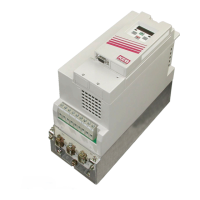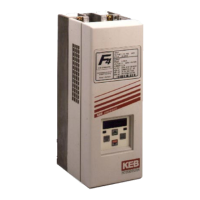Special requirements for open and half-open cooling systems:
Impurities Mechanical impurities in half-open cooling systems can be
counteractedwhenappropriatewaterltersareused.
Salt concentration The salt content can increase through evaporation at half-
open systems. Thus the water is more corrosive. Adding of
fresh water and removing of process water works against.
Algae and myxobacte-
ria
Algae and myxobacteria can arise caused by increased wa-
ter temperature and contact with atmospheric oxygen. The
algaeandmyxobacteriaclogtheltersandobstructthewa-
ter-ow.Biocidecontainingadditivescanavoidthis.Espe-
cially at longer OFF periods of the cooling circuit preventive
maintenance is necessary.
Organic materials The contamination with organic materials must be kept as
small as possible, because separate slime can be caused
by this.
NOTICE
Damages at the unit which are caused by clogged, corroded heat sinks
or other obvious operating errors, leads to the loss of the warranty claims.
10.1.4 Coolant temperature
Theowtemperaturemaynotexceed40°C.Themaximumoverheattemperatureis
60°C or 90°C depending on the power unit and overload capacity. The coolant temper-
atureisspeciedinthetechnicaldata.
Theowtemperatureshouldbechosendependingonthevolumeow,so
that at rated operation the heatsink temperature is always 10K below the
overheat temperature level. As a result, a sporadic shutdown is avoided.
10.1.4.1 Moisture condensation
Due to high air humidity and high temperatures it can lead to moisture condensation.
Moisture condensation is dangerous for the drive converter, because the drive converter
can be destroyed through eventual occuring short circuits.
NOTICE
The user must guarantee that any moisture condensation is avoided!
10.1.4.2 Supply of temper coolant
This is possible by using heatings in the cooling circuit for the control of the coolant tem-
perature. The following dew point table is available for this:
64
COOLING SYSTEM
